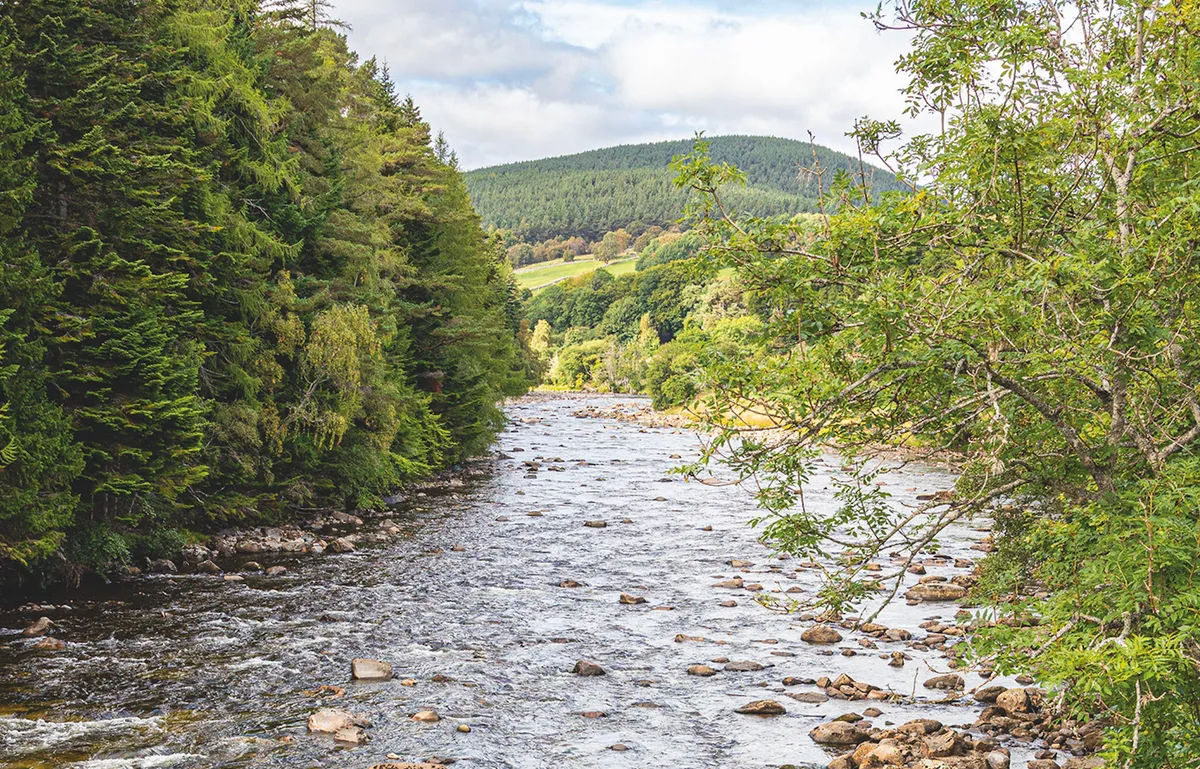Since last month, I have left my beautiful hill and moved into a cottage on the south coast of Scotland. Yes, Scotland does indeed have a south coast!
This is rich, green dairy country – a marked change from the high open hills and moors I have so joyfully become used to. But it’s also where I grew up, and even in the short time I have been here, I am already remembering some of its pleasures and delights. High on the positive list, for me, is being back on a tidal estuary.
We have a tendency to feel that there is (or should be) a clear line between rivers and seas. But, of course, as soon as you begin to think about it, it is fairly obvious that where a river flows down into the sea, the rising tide in the sea may well flow up the river, unless a markedly larger volume of water is coming down fast. We know this about the Thames, for example; it is tidal all the way through London, which no one thinks of as being the seaside. So, twice a day, the river appears full and, twice a day, it has muddy strips along both sides and looks emptier.

Less than a mile from my new home in Kirkcudbrightshire, two rivers meet; the larger is the Dee, the smaller the Tarff. They join together into a tidal lake – full of water at high tide and a huge swathe of soggy, sticky mud with a few stony islands poking out at low tide – and then eventually flow together into the sea about five miles downstream.
More related content:
- Podcast: Looking for historical artefacts on the River Thames with the London mudlarker
- Day out: Dee Estuary, Flintshire
- Wild swimming in Britain: water safety and how to get started
River Dee, Scotland/Credit: Stephen Dorey Creative, Alamy

When we were children, this rhythmic rise and fall of the water played a major part in shaping our day. Partly because the light changed with the tides as well as with the time of day, and partly because we couldn’t take the rowing boat or, later, our sailing dinghy out when the tide was low or likely to become too low to get back safely.
The first time my brother and I got stuck on a sandbar in the estuary, my father sent someone with a boat to tug us off. The second time, he came and sat on the shore, with a newspaper – to ensure our safety – but made us stay in the boat for about eight hours until the tide came back in and floated us off. There was no third time!
Estuaries, in addition to being rather exciting and often very beautiful, have some rather particular ‘nature’ of their own. Among other things, they provide over-wintering accommodation for short-distance migrant birds, such as curlews and oystercatchers, who nest up on the hills but spend the winter on the coast, and for longer-distance migrants, such as barnacle geese, who come down from the far north for the winter. There is a tendency to notice and delight in the arrival of the spring migrants, such as swallows and cuckoos, but to pay less attention to the autumnal appearance of the northern species arriving for the winter. These over-wintering species tend to favour estuaries, both for the protection from storms that they offer relative to the open sea coasts and, in south-west Scotland at least, because of merse: a curious phenomenon of salt marsh. Merse is inedible to most mammals and inhospitable to most crops and, therefore, is left unploughed, but it provides food for birds.
Of course, I am sad to leave my beautiful moor, but I am excited to be relocated on an ever-changing – both annually and daily – river estuary.

